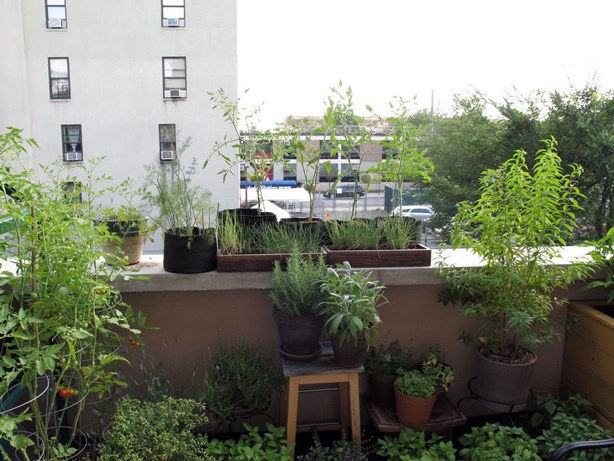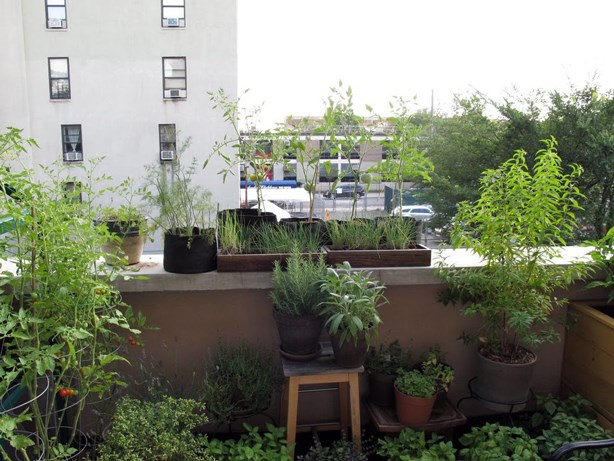 By Akosua Albritton
By Akosua Albritton
While the precaution to not eat wild plants that grow near roads is maintained, presented today are shots of weeds growing in our neighborhoods. They sprout through cracks in asphalt and cement to be available to us.
I took a very short walk around my block to take shots of common weeds that are true gifts to human beings. Some are pretty. Some are tasty. Some are just bearable. Whichever way your tongue takes to them, they grow freely for our benefit. After reading this first piece about the wild edibles growing around the neighborhood, you may recognize the bounty where you live.
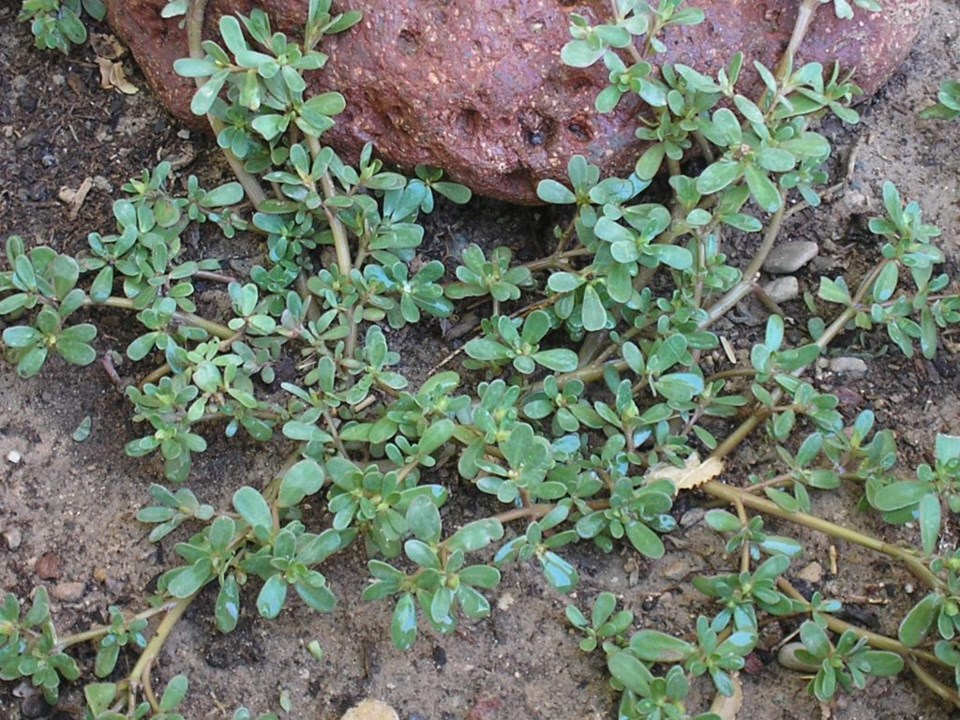
This first shot is of Purslane (Portulaca oleracea). This low spreading plant is found growing in vacant lots and, in this shot, growing from the crack of a curb. Purslane is also known as Pursely. The thick, juicy green leaves are attached to thick reddish-colored stems. In some places it is cultivated as produce. This is due to its high nutritional value. It is a good source of Vitamin C and A, Riboflavin, Magnesium, Iron, Potassium, Copper, Calcium, Maganese, and even a small amount of protein. Purslane has more omega-3 than Primrose or Flaxseed. The stems, leaves, and flower buds are edible. Purslane can be thrown into salads, lightly steamed and seasoned to serve as a side dish or it can be juiced. One drawback is that it contains oxalic acid. Oxalic acid is hard on the kidneys and urinary tract, though moderate intake of it dissolves kidney stones.
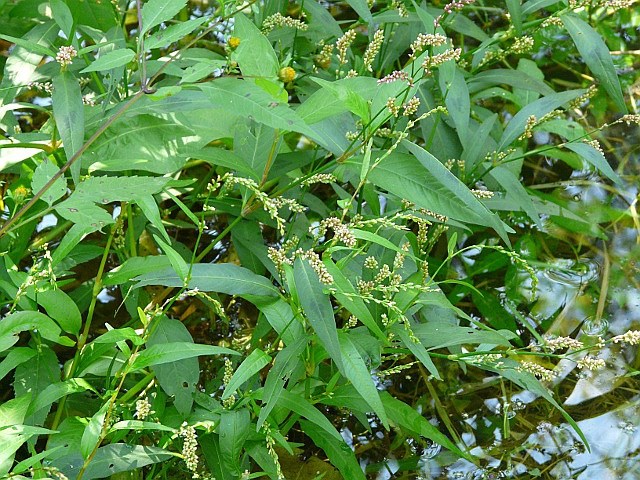
Another plant which contains oxalic acid is Lady's Thumb (Polygonum persicaria). It tends to grow in a patch. Lady's Thumb has lance-shaped leaves with smudges and small white or pink spikes and is a member of the buckwheat family. Both the green leaves and pink spikes are edible. You can eat it raw or steamed. Can you imagine how the pink spikes would dress up a salad? This plant contains sugars, fats, fiber, and tannins which are astringent (think about how your mouth feels after drinking plain orange pekoe tea: it has tannins).
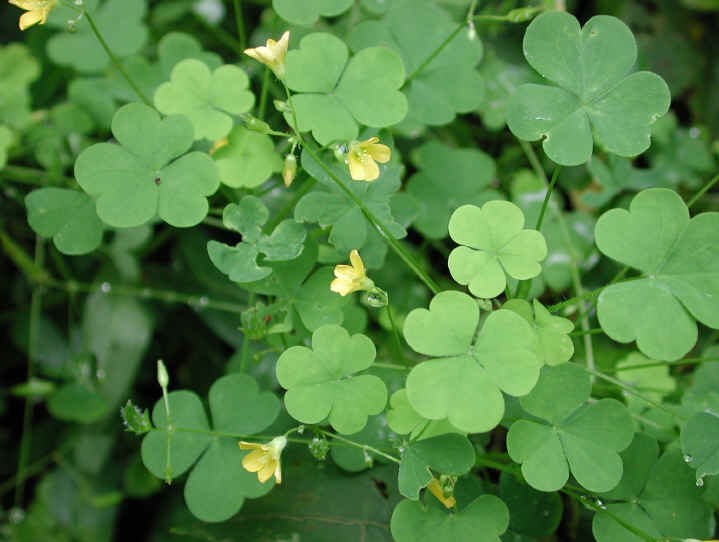
As a tween walking through fields with friends, we'd come across a patch of small green plants with little yellow flowers. We called it sour grass because it was sour. Decades later, I laugh when I hear "my sour grass" is called also Wood Sorrel (Oxalis acetosella). The Sorrel commonly sold in produce stands in Caribbean neighborhoods are dried deep red flowers. They are in the same family. Wood Sorrel can be very small or large heart-shaped leaves that grow in three's. The small ones may be mistaken for clover if quickly glanced at. Wood Sorrel is high in Vitamin C. It is used as a seasoning, a tea, or in salads. Taken as a tea, it treats scurvy, fevers, sore throats, and urinary infections. Interestingly, it contains oxalic acid which inhibits the absorption of Calcium. Therefore, people with gout, kidney stones, and rheumatism should avoid it. It can be steamed or eaten raw. To make a tea, pour boiled water on the leaves and let steep rather than boil the leaves.
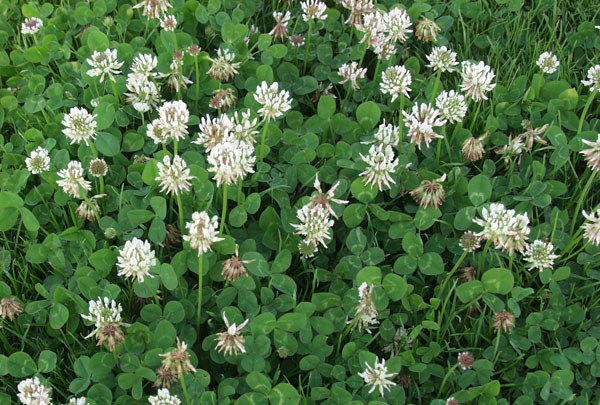
The last plant to be showcased in this post is White Clover. White Clover (Trifolium repens) is Red Clover's modest but powerful sister. Growing lower to the ground than the red one, both are in the pea family. The white blossoms are a bunch of pea-like blossoms. While White Clover is not the tastiest edible, it is extremely nutritious. It is packed with protein, beta carotene, Vitamin C, many B Vitamins, biotin, choline, inositol, and bioflavonoids. It is best to eat it when it is very fresh or completely dried. Fermentation should not be present in the plant. Because every part of it—root, stem, and blossom—is edible. Some people think of white clover as a survival food. It's time that it's carpeting of lawns, vacant lots, and fields be appreciated. People ought to know its dietary value.
White Clover may be put in salads, soups, or steamed. The root is digestible once cooked. White Blossom tea is good for gout and rheumatism. As a tea or raw food, it is good for colds, coughs, and fevers. Instead of de-weeding it from lawns, it may be better to let it grow along with the grass blades.
Akosua Albritton calls herself an itinerant educator. A born moonchild who loves nature, she hopes to inspire other people to love nature in the midst of the Big Apple.

